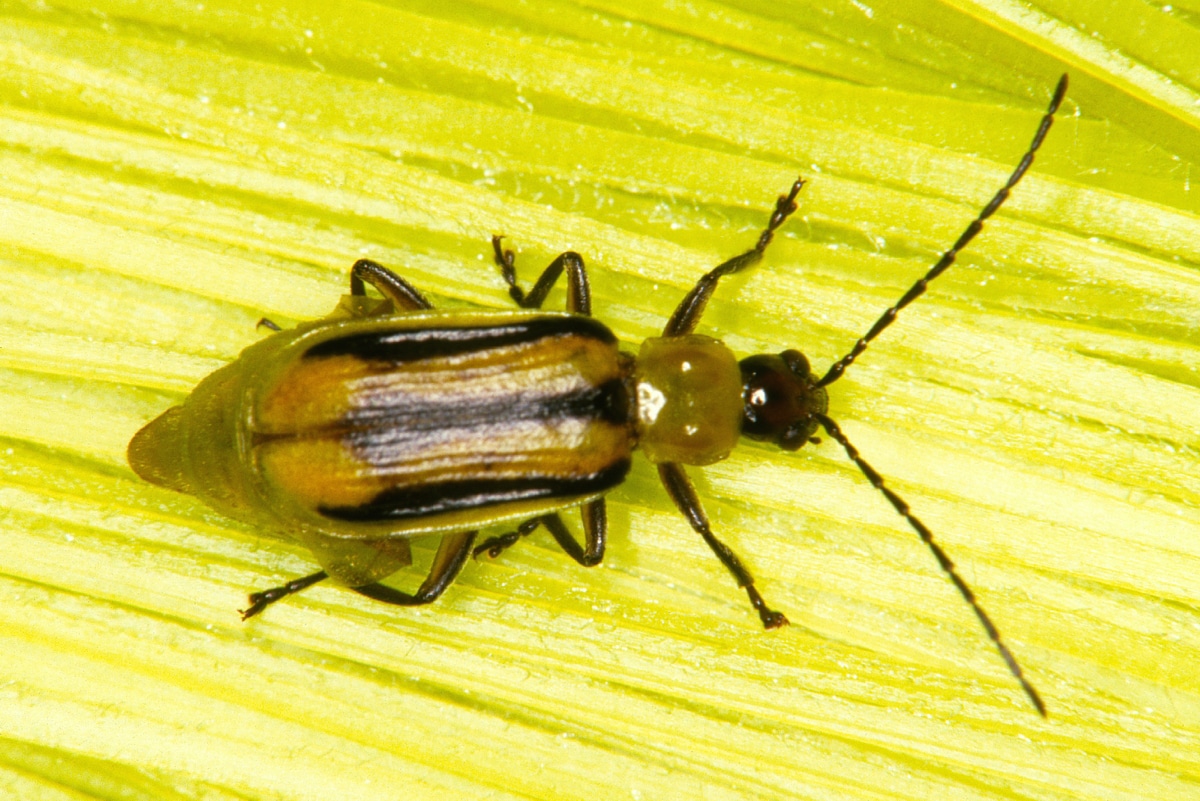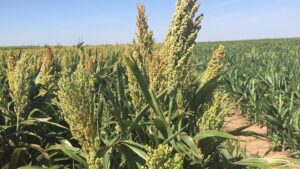As 2020 approaches, learn how to start fighting off that pesky corn rootworm with new management practices.
Corn rootworm: It’s a rather annoying pest that pops up across the Midwest and can become a problem for the field rather quickly. But that’s not to say it’s immune to management.
Troy Bauer, field technical representative for BASF, estimates that western corn rootworm has cost corn growers over $1 billion in yield loss and control expenditures annually.
“Insecticides have been used to control corn rootworm since the late 1940s,” he says. “Adult corn rootworm beetles usually emerge above ground in early July and can be found in cornfields throughout August and September. The insect consists of one generation per year, with females laying eggs in cornfields to over winter and hatch the following year.”
Bauer says most egg laying occurs from July through September, and a single northern corn rootworm female can lay more than 1,000 eggs in the growing season. On top of that, the western corn rootworm — one of the more problematic species, as opposed to the northern and southern corn rootworm — can lay around 1,800 eggs in a season.
Then, the larvae hatch and begin feasting on corn roots, which causes reduced nutrient uptake and increased lodging potential, Bauer says. This makes it difficult for plants to maximize photosynthesis and these lodged plants are difficult to harvest. On top of that, Bauer adds that adult beetles can feed on silks and reduce pollination, further causing reduced yields for growers.
“As early as 1959, resistance to cyclodiene insecticides was identified,” Bauer says. “In some areas of the Midwest, such as Kansas and Nebraska, and other areas of the western corn belt, growers adapted an adult management approach to reduce egg laying by relying on carbamates and organophosphate insecticides. Corn rootworm beetles have developed resistance to some of these foliar insecticides as well.”
To beat some of these resistance issues, Bauer says one common cultural practice to assist with corn rootworm control is rotation away from corn for at least one year. However, this wasn’t a catch-all strategy either.
“In certain geographies, corn rootworms have developed a strategy to overcome this by laying eggs into soybean fields in anticipation of planting corn the following year,” Bauer says.
The western corn rootworm is the culprit for this sneakiness. In addition to overcoming crop rotation in this way, another corn rootworm species — the northern corn rootworm –— has an extended period of the egg stage, where eggs can remain viable underground for 2-3 years before hatching.
Beginning in 2005, another potential solution was the introduction of Bt corn into rotation. According to Christian Krupke, professor of entomology at Purdue University, Bt corn has helped growers in Indiana over the past 10 years.
“Corn rootworm has been going down in severity and prevalence in Indiana,” he says. “Part of the reason for that is that the vast majority of field corn in the state is Bt corn targeting rootworms, as well as caterpillar pests. The majority of rootworm larvae die after feeding on Bt traited hybrids in Indiana. And the lower populations of the pest reflect that. But we’re really still managing them as if we assume they’re going to be there every year.”
“The adoption of Bt crops has been beneficial; however, resistance in western corn rootworm to corn hybrids expressing Cry3Bb1 toxins was reported in 2009,” Bauer says. “Resistance to Cry34/35 was documented in 2018.”
Although these pesky and sneaky pests have developed numerous ways to combat usual management styles, never fear. There are ways to combat and prepare for corn rootworm if it appears in the field.
How to Prepare
First thing’s first: find out if you have corn rootworm in your field.
“There might be some acres where farmers need to investigate, for example, using a check strip of non-Bt corn, to determine what pest pressures are like and whether they need all Bt traits that are available,” Krupke says.
Bauer agrees, and says growers need to continuously scout their field throughout the year.
“First, scout the fields throughout the year to determine the amount of root feeding present, as well as the level of corn rootworm adult beetles flying around,” he says. “Then, you can move on to determine management strategies for the following year.”
One thing Krupke says to be aware of is what traits you need to use for the year, versus what traits you don’t need.
“We know we don’t need every single trait every single year in all fields,” he says. “When commodity prices aren’t great, then it’s a good time to revisit your management practices. For example, plant an area with corn that doesn’t have Bt traits for rootworm if you don’t have a history of the pest in your area. And there are those areas in Indiana, particularly in the southern part of the state.”
One management strategy that can be effective for management is an integrated pest management (IPM) strategy — using only what you need, when you need to use it.
“If you use Bt corn plus a high rate of a neonicotinoid seed treatment, you aren’t really using an IPM strategy, because you are targeting the same pest (corn rootworm) with two different approaches, meaning one is redundant,” Krupke says. “Well, you could change the ‘I’ to ‘insurance’ and have Insurance Pest Management. You are banking on all of the worst case scenarios being present in the field that year. The other reason to hold off on using Bt traits all the time is to delay resistance as long as possible. One way to look at resistance to Bt traits, is that you have a definite number of years you can get out of a trait, and the number depends on the trait, the pest, and the pressure level. But it is not infinite, so growers are best served by using it only when needed, rather than across the board and including at low, sub-economic population levels.”
If you decide that a seed treatment is the route to take instead, Bauer says that the Poncho 1250 Votivo seed treatment is a good way to protect young plants from pests during the critical early development stages.
“The insecticide component of Poncho 1250 Votivo provides good control of critical early-season insects, such as corn rootworms and wireworms, which are commonly found in corn,” he says. “Votivo is a new biological component — a unique bacteria strain that lives and grows with young roots — to prevent nematodes from reaching the plant and causing damage.”
Krupke believes it all starts with revisiting what you’ve done in the past and changing it.
“Farmers don’t always do the same thing on the farm,” he says. “We know that 2020 is going to be different than 2019.”
As for starting in IPM, Krupke says there’s plenty of things you can do.
“If your rootworm populations are low, you don’t have to manage them,” he says. “For example, on our research plots, we don’t get economic heavy pressure of corn rootworm. We want to develop good populations so we can learn things, but we have a hard time generating the numbers. The background populations, statewide, are just very low.”
If you’re working in an environment similar to this, Krupke says it’s the perfect time to experiment.
“Don’t use Bt corn in some plots, leave a check strip — just experiment,” he says. “The most information you’ll get is if you dig up some of those roots mid-July and look for some injuries to the root.”
In terms of monitoring, Krupke says there’s not much to do before 2020 except start forming plan for where to plant Bt and non-Bt hybrids.
“The eggs in the field are always there,” he says. “The most powerful solution is still rotation. It’s a great way to reduce the pressure from corn rootworm, because any eggs that hatch the next year into a crop other than corn, will die.”
Krupke recommends having some flexibility with planting this year.
“Make seed orders that include flexibility,” he says. “With flexibility, you can learn more! If you learn that pressures are low in your field, then you can learn where pests are and where they are not — and make pest management decisions that are better suited to your operation in the future.”











